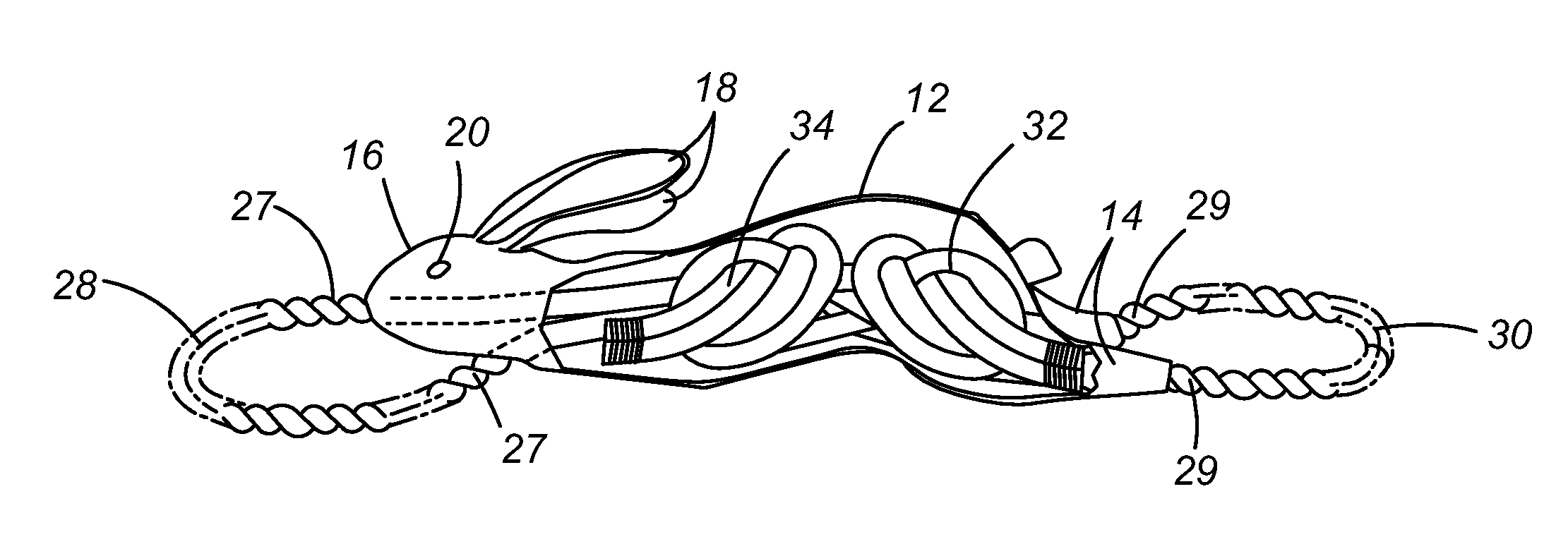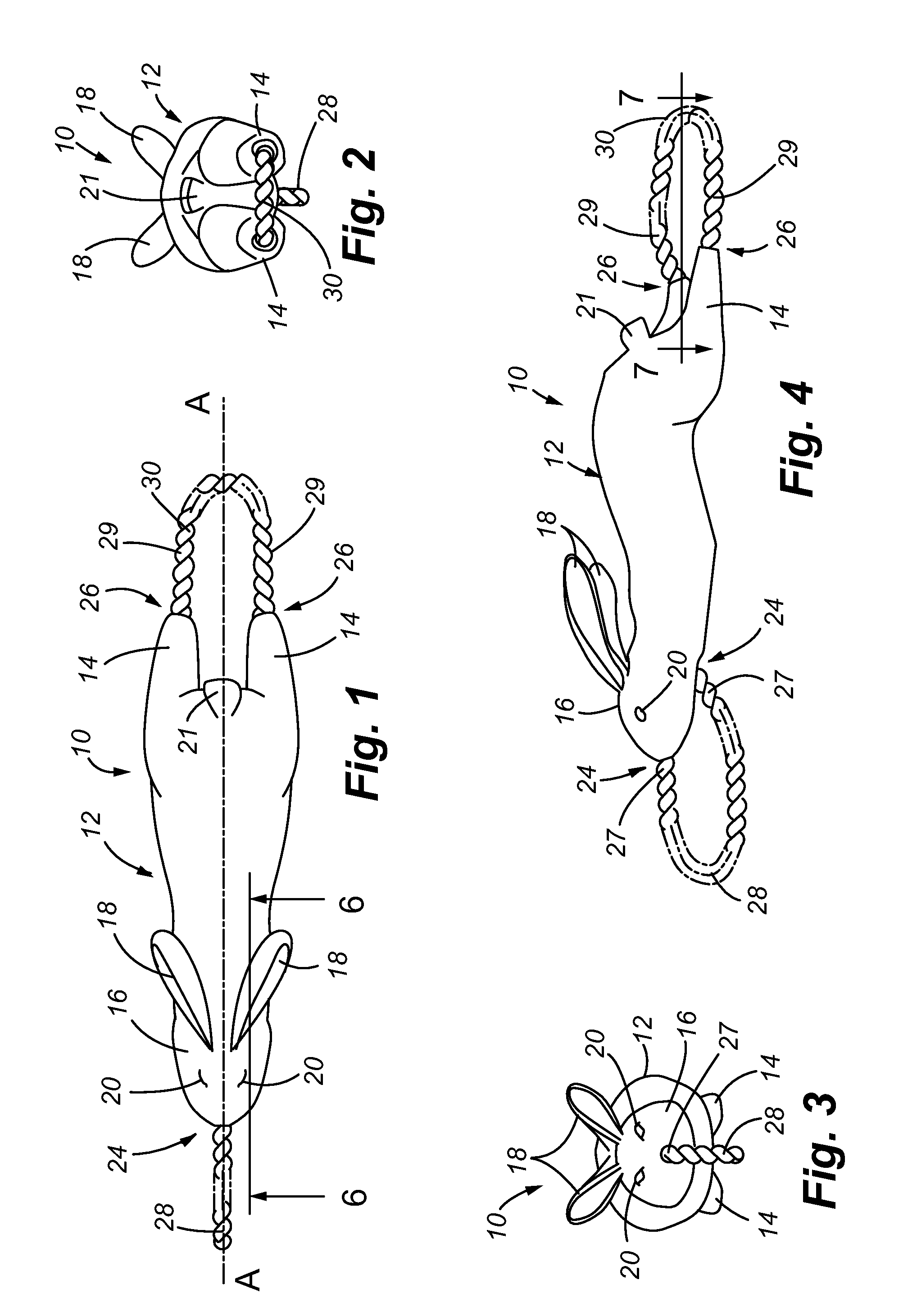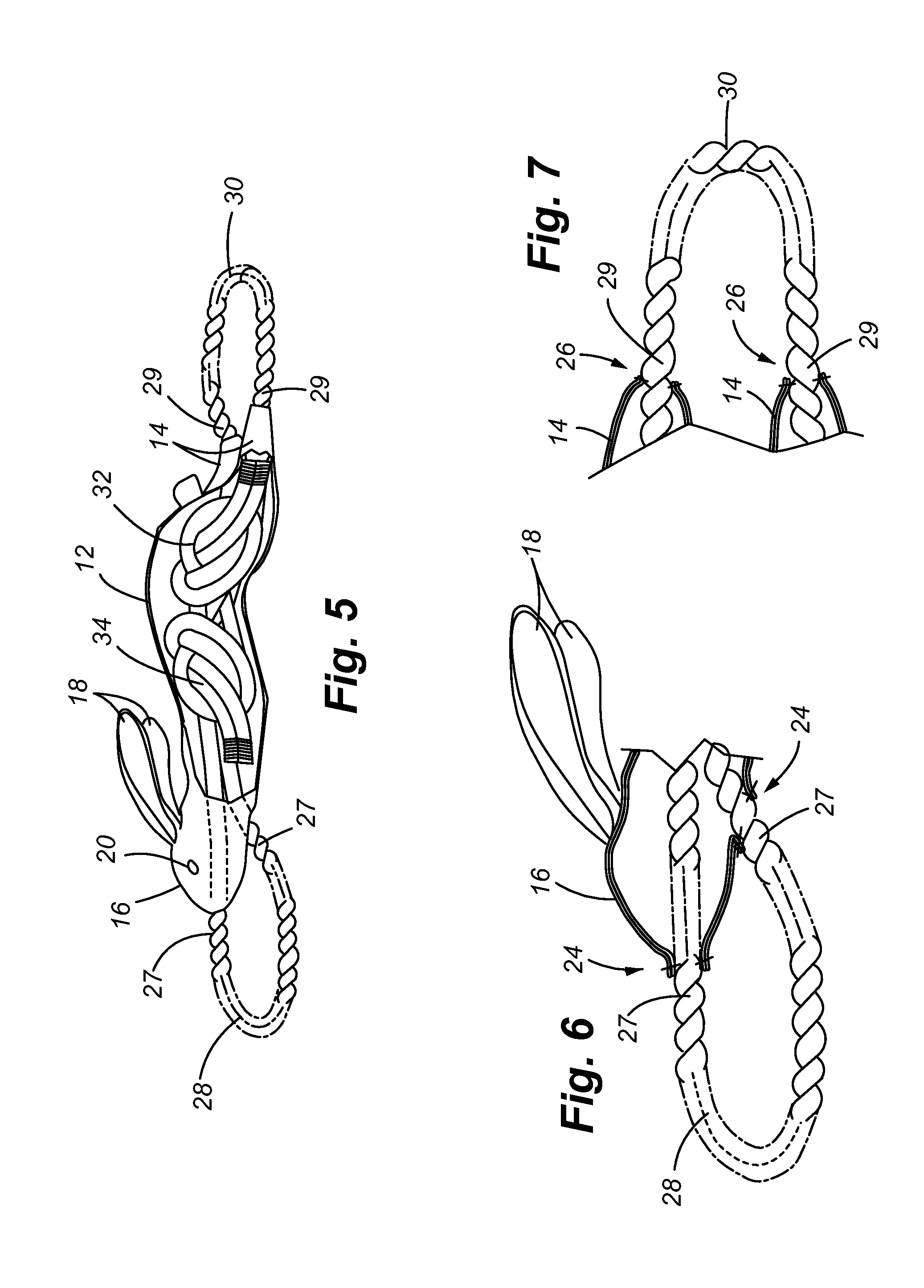Pet toy with flexible body and rope support configurations
a flexible, rope-supporting technology, applied in the field of plush toys, can solve the problems of easy torn fabric by tugging action, undesirable torn fabric material, and relatively short time period, and achieve the effect of robust construction, effective stuffing toy, and long time-consuming
- Summary
- Abstract
- Description
- Claims
- Application Information
AI Technical Summary
Benefits of technology
Problems solved by technology
Method used
Image
Examples
Embodiment Construction
[0030]FIGS. 1-4 illustrate a first preferred embodiment of the invention. The invention is a toy 10 characterized by a fabric body 12 with two prominent loops 28 and 30 formed on opposite ends of the toy. In FIG. 1, the toy is formed in the shape of a rabbit. Accordingly, the fabric is shaped and sewn in a pattern to represent features of the animal to include the body 12, hind legs 14, a head 16, ears 18, eyes 20, and tail 21. As best seen in FIG. 4, the front portion of the toy includes two front interface areas 24 where the sections of the rope loop 28 extend through the fabric. At these two front interface areas 24, the fabric is sewn, fused, or otherwise joined to the rope so that the rope will not separate from the fabric material. Similarly, at the rear or opposite end of the toy, a pair of rear interface areas 26 is located where the fabric material is joined to the rope loop 30. The loop extensions 29 of the rear loop 30 simulate the lower portions of the legs 14.
[0031]Refe...
PUM
 Login to View More
Login to View More Abstract
Description
Claims
Application Information
 Login to View More
Login to View More - R&D
- Intellectual Property
- Life Sciences
- Materials
- Tech Scout
- Unparalleled Data Quality
- Higher Quality Content
- 60% Fewer Hallucinations
Browse by: Latest US Patents, China's latest patents, Technical Efficacy Thesaurus, Application Domain, Technology Topic, Popular Technical Reports.
© 2025 PatSnap. All rights reserved.Legal|Privacy policy|Modern Slavery Act Transparency Statement|Sitemap|About US| Contact US: help@patsnap.com



